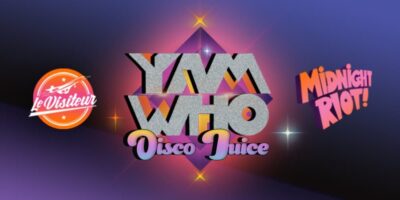Disco Legend Nicky Siano talks about Larry Levan, Frankie Knuckles, Studio 54 & More

Photos courtesy of Nicky Siano
Hey this is John from Le Visiteur Online, welcome to the first of our new audio interviews where I will be speaking to some of disco and house music’s most inspiring artists and biggest characters.
For our opening episode I am talking one of the true legends of the scene Nicky Siano. His club ‘The Gallery’ in Manhattan was one of the three clubs which helped spark the disco scene and bring it to worldwide attention alongside the Loft and the Paradise Garage. Nicky was also a resident at the equally legendary Studio 54.
Inspiring those around him Nicky was a mentor to both Larry Levan and Frankie Knuckles so his imprint on the scene is unquestionable.
We had a long chat about his career including how he started his DJ’ing 16, the impact of the Gallery, how he developed his DJ Style, David Mancuso, Larry Levan, Frankie Knuckles, his own DJ heroes, his upcoming film ‘Love is the message’ and how his career and life has progressed over the years.
Nicky is appearing at the Scottish House & Disco festival on Saturday 16th April. Check out more on that event here and grab your tickets for the event via: http://houseanddisco.co.uk/

Let’s get into it.
Hi, Nicky, thanks for speaking to us today.
First steps
Let’s go back to the very start of your career. You started DJing in clubs at the age of 16.
You mean the one where I was in a crib with diapers on, singing “come to the cabaret”?
Before launching your own club The Gallery when you were only 17 in Chelsea, what was your musical background?
I studied music before high school in grammar school, we had a music teacher. And I wanted to take the piano so bad. And my parents insisted I play the accordion. Because my brothers had extra accordions that they never played. They’re 10 years older than me. So we shouldn’t let it go to waste, play the accordion. I hated the accordion and oh my god, I went to a recital once where I was playing something very simple, and I froze in the middle of it. And people like clapped, but they wanted to hear more. It was so embarrassing. I knew that was not for me.
So I did what I always did. I took the money I saved from my paper route, I had this paper out route. And it started out with they gave me one paper route and then I was so good at it they gave me two. And then they gave me two more on top of that. So I was making like at least 300 a week from just the paper route. And I’m living at my mom’s, I bought my stereo. The first thing that I wanted was a good stereo because you heard your music on that, and that was everything. And it wasn’t so much what was playing, it was how its sounded from a very young age. I was into the sonics of sound. Like people always tell me, I say to people “did you hear that in the record?” And they go what and I go, listen, listen, 1234 and they got Oh, yeah, now I hear it.
Inspiration
When did you first decide you wanted to be a DJ? And was that a key lightbulb moment when you decided, yeah, this is what I’m going to do for the rest of my life.
I was so blessed everything that happened to me. I definitely believe that there is some kind of higher influence going on in life sometimes. And well all the time. But sometimes we’re open to it, sometimes we’re not. And I went to The Loft at the age of fifteen years old. David’s Loft, for those who don’t know, The Loft was the club. I mean, the seminal, the pinnacle of the whole dance music movement was that club. And I got to go there through a girlfriend of my brothers, because I played her music one day and it was dance music that I was listening to on Christopher Street where all the gay people hung out. I played her the record and she said “you like this music? you should come to the loft”. And she took me and I got a membership card with my friend Robin. She and I always hung out together. And it was either the second or the third time I went there. We’re on the dance floor. And it was a tiny space. So 2000 square foot and just two years later, The Gallery had to be 4000 square foot, because the whole movement was very popular. So I’m at the Loft for like the third time and the song crescendos. I thought it was ‘Girl you need to change your mind’ but it wasn’t, it was something else. The song crescendos, does this thing with the white flash goes off and you go into darkness, right? And everyone goes “yeah, yeah”, and there’s this guy singing “Hey, Oh, key Pasa, Hey, oh”, we used to call him Al. “Hey, Oh, key Pasa, Hey, oh”, in time with the music and everyone’s answering him like he goes “Hey, Oh, key Pasa, Hey, oh”, and everyone goes yah, yah, yah, “Hey, Oh, key Pasa” yah, yah, yah, yah yah, and I’m listening to this and I’m going nuts. And I see one little lamp at the end of the room that’s still on. And I’m fixated on it because it’s only light in the room. And the song goes into another musical break, and that fucking lamp dimmed, and went out, not just turned out, dimmed out. I leaned in to Robin and I said, Honey, I got to do what this guy is doing, whatever that is, I got to do that. So that was it.
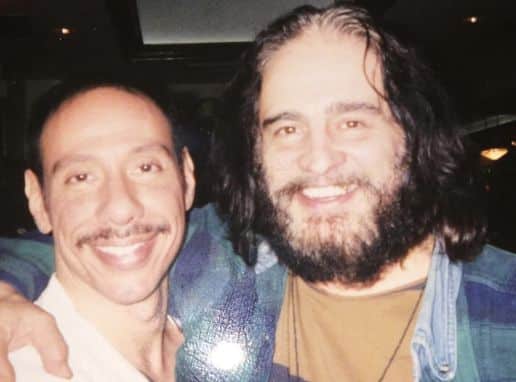
Beatmatching
As a DJ, you help break the mould, right from the off, and you are renowned as one of the first DJs ever to mix records together seamlessly rather than just play one record after the next. How long did it take you to develop your style?
You know what I’ve never told this story, piece by piece. And it really needs to be told because I’m not the only one that was involved with this Richie Kaczor, who was eventually the DJ at Studio 54 was the other person involved in this beat matching phenomenon. The way it’s used today, it’s abused, people use it to play one tempo all night. And I’m sorry, that’s boring. Boring. The same tempo all night long at 126 to 128 puts me to sleep standing up. So I’m kind of playing with the because we knew like David Rodriguez, who was like my DJ mentor used to tell me “make the blends”, we call it a blend, not a mix, “make the Blend smooth”. And I was like, okay, ‘make the blend smooth’. And, you know, I always tried to do that. Even before I was playing out and had the equipment, I used to go from my stereo at home to a little Hi-Fi that my parents had and mix records that way, and just see how they lined up. I used to tell Robin “can you dance through the change”. So if you can dance through the mix, it’s a good mix. So I started getting felt Mats, because I had heard from Rodriguez, we have to make the record kind of slip over the turntable. And then I got into the, you know the workings of the turntable and how, you know, the belt driven turntables would be harder to slip with because of the torque in the engine of the platter. And so I got something to put underneath the albums. And then I was using 45’s under the album so that they would slip because my turntables were Thorens TD 125. And I wasn’t going to change them because I tried five different turntables and they’re the only ones that didn’t skip at the gallery. Because the first gallery the floor moved, I mean, mooooved. Robin worked downstairs below the dance floor and one night, a big chunk of the ceiling came right down and fell right in front of her on the desk. Thank God, no one was hurt. But just think about that, that’s how much the floor was moving. And these old buildings were rated very high because they had big shop machinery in these places. So those floors was solid, it’s just that they were all wood and wood moves it gives that’s why you don’t get your knees all screwed up from dancing on wood. So I kept thinking, if I could only hold this record, I could do this, I can do this. And I finally got it, I got a really sweet, gingerly kind of hold on the record so that the record didn’t spin up to speed, it was at speed. And I was able to start beat matching. Richie picked it up like that, the next day, he started beat matching every mix. Now I didn’t, I like to change tempo during the night. So I’m playing like 116 beats per minute, then I’ll go to 120 then I’ll go to 122 I’ll stay at 122 for a while. Then I’ll go to 124, 128 and sometimes 130, 134. Then I like to go back down and start all over again. I’ll go way down to 98, so how I do that is I just let that record end and then I start the new one. And believe me, they’re ready for it. They’ve been dancing for an hour and a half and the speed has been going up and up and up. They’re ready to go to the bar and have a drink so it was sweet. It worked out
It certainly worked out, definitely!
It worked out for the club owners too is what I’ve meant.
I guess the club owners are quite happy that you’re actually building into your sets time for people to get back to the bar and spend their money. They’re probably ecstatic with that.
Who were your own DJ heroes when you were starting out? And who did you pick up tips from?
People say because I went to the loft, that the DJ I looked up to most was David Mancuso. To me David Mancuso wasn’t a full on DJ, he was a party giver, an atmosphere creator, he was an amazing designer. He did things that pioneered the right kind of sound, the right approach to sound, the right management of sound, reproduction was handled with kid gloves at his space. I’m just choosing my words carefully because David never ever called it a club, ever. It was the party, my home, the space. It was never a club. And it wasn’t, it was his house and you go into the bathroom and you see his toothbrush and toothpaste and deodorant and you know, all that kind of stuff there. It was just so lovely, people were human beings. It came out of the civil rights movement, and gay rights movement. That’s the roots of disco right there.
Stonewall riots in 1969 changed the law that two people of the same sex couldn’t dance together on a liquor licensed New York City dance-floor. That law prevented clubs from opening and going on. That’s why the Stonewall riots happened, because the place Stonewall kept getting raided every time they had a little dance night. My main DJ inspiration was this guy called Michael Capella. And he played at this club called the Limelight on Seventh Avenue South, not the one on Sixth Avenue in Chelsea, that was owned by Peter Gatien. This is the one in the village. And he was my main inspiration, especially for blending. He really did those blends, and blending was all about timing. You would take the needle and keep putting it on at the beginning. Keep doing it, doing it doing it until it sounded like it matched. And then you bring up the volume, that was blending.
The Gallery
So you run the gallery with your brother Joe, how did you go at the age of 17 to run in a club? Whose idea was it and how did you put it into place?
Well, I told you about Robin right, who was my partner in crime for those seminal years of my life. And I got my first job playing records at this place called the Round Table. And the Round Table was a bar with a great, great show, a drag show on the weekends. And it was very popular that drag show, it was called the Lafleur Sisters. And they had gotten so famous that one of the guys appeared in Bette Midler’s movie The Rose. So I got my job there, and within eight months, John Lafleur, the head Queen said, “you didn’t put in Diana Ross’s chorus soon enough, you got to change to it, which was true. And I said, “John, I have no cue system”, that mixer that they had didn’t have a headphone cue-ing system, it was just two knobs on the box. So I’m up on the balcony four huge speakers, one of them right next to me. And I very gingerly turned up the volume to hear if things would match and whether or not the record was at the right point to mix into it for the Lafleur Sisters, and I fucked it up one night, and I apologized profusely. She had me fired. So Robin and I went home, and the next day, we were so proactive. I was just like, “I have to have my own club, now if not sooner”. So we went walking around Chelsea where we lived. And at that time, everybody had placards outside their building saying loft for rent. So we looked at these placards hanging there and I said let’s go into one and at the time there were these old time elevators with these big you know, wheels that someone had to operate, and there was a super there. And we said to the guy, you know, “how much is it to rent, you know, say the second floor up there?” And he says, “Well, that’s about 3800 square feet, it goes for $375 a month”, and we were like, “no, okay”. We went home and we start calculating, and going through all the figures, furniture, sound system, and it came to $9,000. Now, the only grown up, we knew Robin, and I was my brother, Joe. He was 10 years older than I and we had stayed at his apartment once in a while, because my mother was flipping out first that I found that I was gay, and then that I was sleeping with the woman, and it was just all screwed up in her head. So we went to my brother, and we talked to him about this plan to open a club, “like The Loft”, we kept saying, and he said, “Well, how much do you need?” And we said, “$10,000”. And he said to us, “did you know?” And we said, “what?” and he said, “Did you know that I just settled my accident for $10,000”. And we had no idea. We had no idea. And that’s it, there you go The Gallery.

The Lights
So I read in one of your press clippings on your website that when you opened The Gallery used to work the lighting system with your feet when you were DJing across three decks? Is that true?
Okay, well, some of the lights were on foot pedals. And while I was at the Round Table, I met this guy, his name was Robert Da Silver, and he became my light man and lover, and he was the love of my life basically. He died of AIDS. And he worked side-by-side with me on building The Gallery’s lighting panel. That lighting panel was so versatile, and so simple. And it would out-perform most of the stuff that they have today, except the heavy flashing stuff. But he could flash it up, he flashed it up, it was a very simple system, but it was very effective. So he installed several foot pedals, because when there was a crescendo on the record, and all the lights were on, right, he’d want to hit the white flash, make people get blinded for a moment, throw out the flash and send everyone into complete darkness. So the move was hit the pedal, hold down, all the switches whoosh, and then you’re in darkness. And what happens when you’re thrown into darkness, then you’re blinded for a minute?
Ha just stop, scream?
Scream. That’s it. That’s the move. It would just be you know, people screaming, and that’s what we wanted. It was just great and we developed that light system with psychological and physiological responses to light in mind. And this is when I’m 17 years old. Imagine what I could do today, oh my god. I could work them with my eyelashes. The first thing I say to light men that I’m working with is “less is more” and “darkness is the lighting effect”. When you have five things moving and doing things and you change one, no one notices that shit. But if you had one thing working, and you changed it on a crescendo, people would notice that.
Gallery Two
So in 1974, you opened The Gallery two. What were the major differences between the two clubs and what were the factors that necessitated the move?
One was like a bunch of kids playing house. The other was the real bonafide Studio 54 of its time. Absolutely 100%, after I played at Le Jardin after I played at all these clubs during the week while Gallery was open on the weekends, we built a club that was absolutely the most breathtaking club of its time when it opened in 1974. And it was October 1974. First of all, we started with very low ceilings, like you could almost touch the ceiling if you were very tall with your hands up. You can almost touch it in the first gallery. The second gallery was five people high, had a balcony that overlooked the dance floor. We built the lighting system onto electrical kindorf which are little bars that you run conduit in to protect it and it was on three levels so that if you’re looking from the balcony you see Red, blue, green, or from below you see red, blue, green. okay. And then I become some friends with Steve Rubell, and he hangs out under my booth and looking up at the lighting. And he builds a club, where the lighting went up into the ceiling. My booth was just a counter strung between two pillars in the room. So you had to go under it to get in. And he would hang out under there on a pillow every Saturday night for about a year. And I didn’t mind because that’s the way it was back then. Steve and I were close friends and lovers this for a while. I didn’t mind at all. He was brilliant. And he really did a great job, except with the door policy. 100 percent against that door policy.
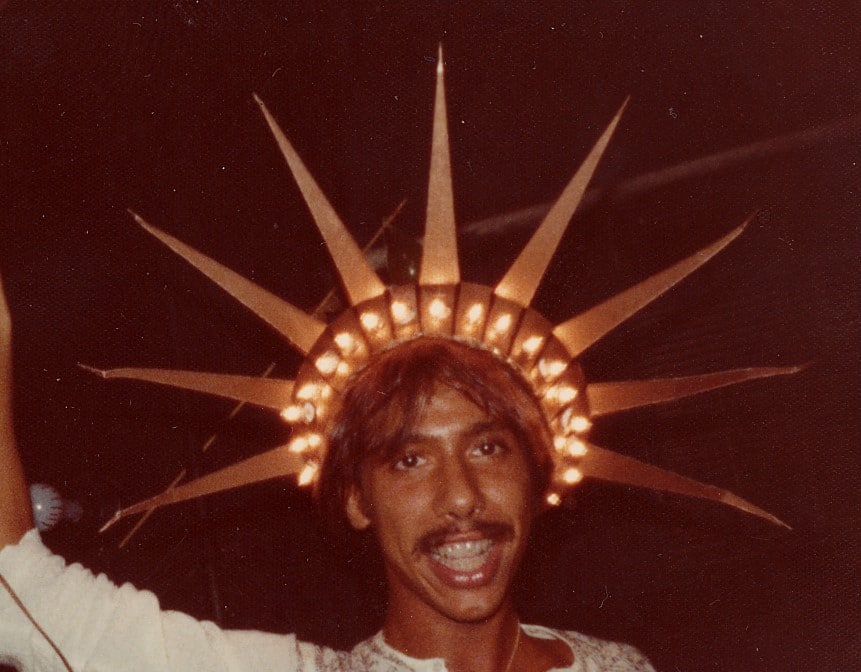
The 70s disco scene
So I guess that kind of brings me on the next question. Obviously, the mid to late 70s was a kind of epochal time for the club scene. It was the zenith of Disco, which moved towards the electronic end of disco, which would in turn obviously lead onto house music. Did it feel like you are creating something truly special when you were involved in it at that moment?
In the beginning, it was like, “come on, let’s have a party and invite our friends and play them all these new records that we love, and they don’t know.” Then it turned into the record companies were coming with free records. And if you took their free records, you had to play them, sometimes. Those companies I would not deal with, if they forced me and said you’re not getting any more records. I’d say bye. I don’t need your records. You know, that’s how strong I was in believing in the fact that we had to decide what we were playing. And this all goes down to payola. They tried the same thing with us, but they didn’t succeed. I mean, the group of DJs that really were there in the beginning, Bobby Guttadaro, David Rodriguez, Tommy Savarese, Richie Kaczor, myself, David Mancuso, there were about 12 of us. And that core group, we were on vacation together, we were hanging out going to a movie together, we were hanging out going to a Diana Ross concert together. I just recently wrote about it on Facebook. So we were friends. And the thing about that is that, we loved each other, there was no jealousy, or this is mine. Larry used to put a label over the label on the record, so you couldn’t know what it was. And we turned into that from saying, okay, we love each other. Let’s go dancing to “no I’m not showing you mine until I see what you got”. So I became very disillusioned with it, and the drugs were, you know, like right there. It didn’t take a far leap to get involved. I’m sorry, ever did but I’m not sorry I ever did. I mean, it’s kind of a dual sided coin. If I never did the drugs and came this far, I wouldn’t have been the person that I am today. And I’m kind of very, very proud of who I’ve become.
I certainly have to say that you lived your life, Nicky. So you moved around quite a lot towards the end of the 70s through into the 80s. So where did you all live? And how would you say that your life changed over that period.
I moved to Manhattan when I was 16. I stayed in Manhattan until 83. Then I moved to LA for a year. Then I went to Greece and played records for a year, came back worked for David Mancuso for a while. And then David Rodriguez, my best friend in the DJ world died of AIDS and started going to these meetings about HIV self-healing. I don’t know if you’ve heard of her, but her name is Louise Hay. She’s a very famous self healing guru. And she ran these meetings called ‘The Healing Circle’. And we would go to them once a week with all people who were HIV positive because they were dropping like flies, tried to do things like hands on healing, Reiki, you know, all kinds of things. Just try to do something because all of us felt so hopeless. It was so intense. I tell people all the time. I had quite a few close male friends I have but two or three left. Thank God I was friends with a lot of the women too.
How long would you play for on a night of the gallery? And how would you build the flow of your set at that time. So let’s say at the start of Gallery two in 1974 / 1975.
From the time it opened until the time it closed. There was no other DJ, people didn’t want to hear another DJ. At the time, I was the flavor of the year, of the month. For three years I was it baby. And I understand now why, back then I didn’t understand it and I was grateful, very grateful for people wanting to dance to my music, but I didn’t understand it. And it became a problem for me because an early therapist told me this, if you don’t understand what you’re doing, and how you’re making the experience, really excite people, if you don’t understand that, then you’re not going to be able to repeat it. And for a long time, I wasn’t able to understand it, and it made repeating it hit and miss. But I finally understood it.
Gallery tracks
Which tracks do you think are most associated with you and the gallery
Love is the message will always be the record that I’m defined by that the gallery was defined by. What can I do for you by Labelle is is another one. I remember opening night of the new Gallery playing that song, and people went crazy. And the next day there was an article in this trade, like a music thing saying, Nicky Siano and the gallery are back. And boy, it was like an home-town meeting of the best friends you ever knew. It was like, whoa.
Nicky Siano DJ style
So as I mentioned earlier, you were one of the first DJs ever to use the turntables, often spinning sound effects on the third deck. How would you describe your DJ-ing style at that time in the 70s? And how does it compare to how you DJ now?
There isn’t a big difference in how I DJ now and how I DJ’d then, there isn’t a big difference. The difference with today and back then is I understand what I’m doing now. I didn’t understand what I was doing back then. I remember saying to my therapist, “magic happens”. And she said, “What’s that magic?” I don’t know, “just magic”. And now I understand it’s more like a higher power influence. It’s more like, I hate to say the word God because it’s got so much baggage with it. It’s the spirit of love and being together. That to me is what God is. And a person said in an interview “I love Nicki and the way he plays because I’m thinking of a song and then he plays it.” Well, you know what, we’re all getting the same information from the same source. And we’re hearing the name of that song together. Some of us are open to it and some of us are not.

Studio 54
You were also resident at Studio 54. And indeed we’re playing at the now infamous Bianca Jagger birthday party when she rode in on a white horse. It was that party that was responsible for so much of the early press for studio 54 and indeed some of its success thereafter. What were your memories of that event in particular?
I mean, it was so over the top. I’d never seen anything like that before. Steve, pulled out all the punches. It was basically Mick Jagger, Bianca Jagger, Keith Richards, Liza Minnelli, Halston, Truman Capote it, it was like that ilk. And they’re right there. You know, they’re like, under the balcony, I’m equal with the balcony. I’m constantly looking down at them. And they’re having champagne and having a good time. All of a sudden, Steve comes up to the booth and he goes “Do you have any stones?”. I said, “Well, I have Sympathy for the Devil. I always carry that” “Put it on”. So I put on Sympathy for the Devil and Mick’s going “Yeah”. And he looks up and he smiles. And I didn’t notice that she was gone. So the back curtain against the wall goes up. And there’s these floor to ceiling three stories, high letters, Bianca, and they saw flashing. ‘Bianca, Bianca’, and all of a sudden led by this little scantily clad busboy. She’s pulled in on this white horse in a red Halston gown, and from nowhere, 50 photographers, I don’t know where the fuck they came from. But Stevie had planned this to a tee, ‘click click, click, click, click’.
When the night was over, and I walked out of the back entrance where I left from, there was the bumb there. And he said, Got a $1, it hit me like a ton of bricks. The dichotomy, the way they were squandering money, not that it was wrong or right. I’m just saying, it just hit me, really not in a positive way. It hit me in like, Oh my god. The next day, there was a thing called the New York Daily News. And it’s a newspaper. Right? Real big, right. And every day in the center, there’s a centerfold of what happened in New York last night and the Bee Gees were in New York at Madison Square Garden and we open it up, and the Bee Gees are here this big like this. And then everything else is Bianca on that white horse. And my friend David Rodriguez. So I said my friend, “she stole the whole centerfold from the Bee Gees”, “she stole the whole centerfold from the Bee Gees, the Beeeee Geeeees.” So that was the impact of that night. It also was the turnaround for the club because it wasn’t doing well during the week, it was only doing well on the weekend. And that was it. That was the turnaround, and from there on they was selling out every night
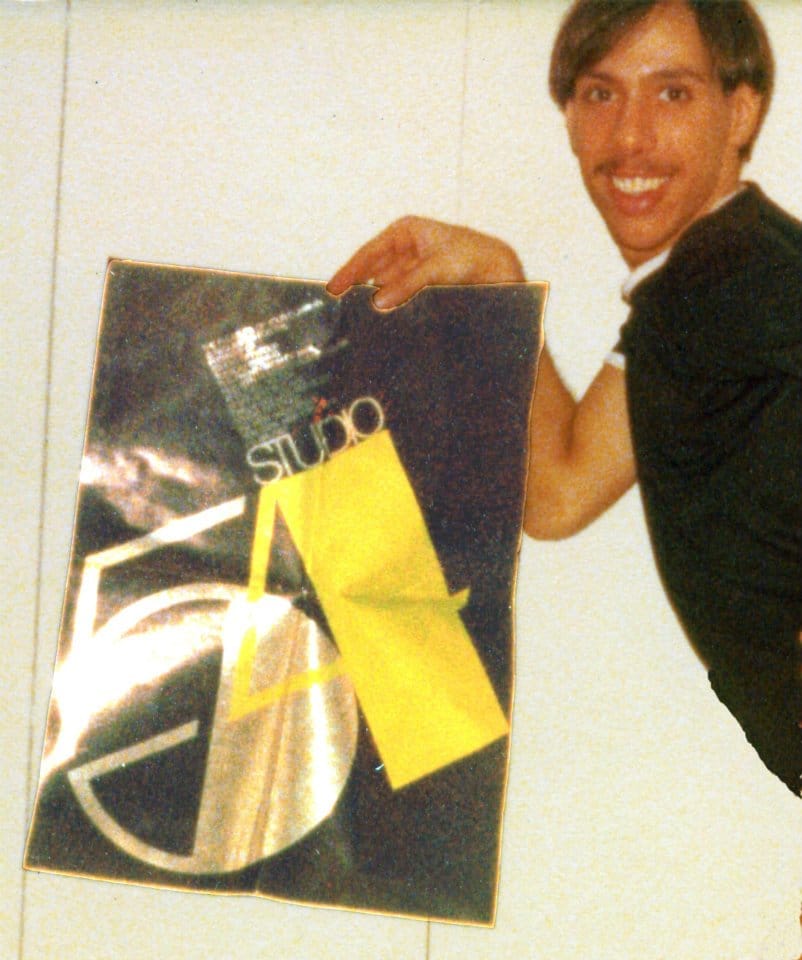
He knew how to do his PR, that’s for sure.
And they used it and they used it well.
How would you compare studio 54 to The Gallery at that time? And how did your DJ sets differ across the two clubs, if at all?
Okay, so studio 54 opens in the late 77. Gallery opened in 72. So you think we’d be way back seat to Studio and all the developments that happened over the years. But New York Magazine, which did the first story on disco that I was in, with David Mancuso, the two of us were in it in 1974. In 1977 they do a ‘Five most breathtaking clubs in New York City’ and there is studio 54, turn the page and what’s there? The Gallery. So how did it compare? How did it stand up to? Pretty well, Pretty well!
You know, I’m gonna write a book on how to be a great DJ. And one of the things is ‘DJing is a live experience’. It’s an action, reaction experience between you and the audience. And if you don’t appreciate that, know that, or go with that, then it’s not DJing it’s playing a set of music that you pre-recorded, that’s what it is. So were there mixes once in a while, like a mix that I’d repeat, because the two record sounded so good together. Yes, there were a lot of things like that. But did you ever hear of this, and this is in my book, too. I’m hearing a song, and there’s an extended HORN BLAST. And it reminds me about HORN BLAST in another song. And instead of mixing on the beat, I mix on the HORN BLAST. They match perfectly, sonically, and people screamed. That’s what I’m talking about, how to become a great DJ. It’s not just about the beats. It’s about what’s happening with the crowd. It’s about you know, the flow, ebb and flow. And you could play with that in many different ways.
DJ skills
So you and the other DJs, who were playing at that time really had to define what it actually was to be a DJ, do you think that some of the skills that were pioneered in the 70s have been lost today?
So much of the work is done for you because of quantizing records and warping them and you know, everything just matches when you put it on? I don’t use any of those features. When Ableton first came out, I warped my entire collection, 98, and I played with Ableton, and I loved it. But how did I go from fast to slow records? Now I wanted to go from a faster record to a slower record, but just let it end. And Ableton stopping me it’s giving me all these directives. “Okay, you want to go to the slow record? Well, it can’t use the warp setting, then you got to just use the regular setting”. But I wanted it a little bit faster, so it was hindering me. And when I saw that, NO. Three CDJs, two hard drives plugged into them. And I’m good to go. Now I would love to use vinyl because it certainly is still the best sounding medium. No doubt hands down, bar none. But it’s not practical. Nevermind flying over the pond, just taking it down the road is too much.
Vinyl
Do you still buy vinyl, I still buy vinyl and then just rip it straight to wav?
100 percent, as soon as I hear a record and I don’t have that. Like I just heard a thing by Bobby Thurston on Prelude that I just missed. I just missed it.
Love’s Theme
You were instrumental in breaking the record, which is now part of the disco cannon Love’s Theme by the Love Unlimited Orchestra. How did that come about? And do you think the success of that record and the club’s helped reshape how record labels did their promotion?
Okay, I just want to say a few things before I tell this story is Tom Moulton disagrees with me on this story. And he won’t talk to me about it for some reason, but what I want to say to Tom is, I was at one place and that was my experience, and you were at another place and that was your experience. And both of those things are true, they coexist. So I’m not trying to take credit for anything I didn’t do. I’m not like that. I always stop and say, “Well, he did this. And he did that”. So I just want to be clear that this was my experience and what I saw.
There was this promotion man coming around, his name was Billy Smith. Billy Smith said, “come on down to the warehouse on 11th Avenue”, where he was, “and I’ll give you whatever you want, whatever you want”. It’s not only where he had all the 20th century records, but he had a lot of other music, because it was his record distributor. And he would give us different labels if we wanted something. And we went down there, and it was in his basement, records all over the place. We went into his small office, and David Rodriguez and I sit down and David’s looking at this album cover that’s on the floor, stack of them. And it’s the Love Unlimited Orchestra album cover, and it’s the three women with big afro wigs on it. And Billy said, “that’s a dead album, we’re throwing it away.” And Rodriguez said, “give us a few, we can put them on the walls, that’s a really funny picture.” Well, that was the Love’s Theme. We took it home and we heard Love’s Theme. And we immediately knew, that was a hit. And actually, it was Christmas, around Christmas. Because I remember going into the Limelight where Michael Capello and Rodriguez were playing, everyone was dressed in white, and there were White Christmas trees on both sides of the dance floor. And as I’m walking down, I heard the swell of the strings. “Dun dun dun dun”. And that became so huge eight climb the charts, I believe to 105 or eighty something without any airplay. And it was the first time that people were noticing at the record labels for some reason. Billy was shouting it loud and clear. “It’s the club DJs assholes.” And he really was instrumental in people getting records for free and being able to get promotional products because Rodriguez and I would search for promotional product wherever we could. We were not making a lot of money. And we once went all the way out to Queens, like an hour and a half from where we lived in Manhattan to go to record pickup day for DJs. And we get to the door and it’s in Queens, it’s just a really plain door. CBS Records that’s Columbia, that Sony Music, okay. And the door opens and I said “Hi we’re here for record day. We’re DJs” and she said, “Well, what radio station are you with?” And I said, “Oh, I’m from The Gallery, the club, The Gallery and he’s from the Limelight.” And this is what I got. “We don’t service club DJs”, boom door in your face.
She’s a charmer!
That’s what it was about back then. And then loves theme happened. And that’s what turns all this shit around and on its ear, because we made it happen, the DJs. And I don’t want to blow my own horn too much but I was the first person to play Love Hangover. I was one of the first people to play Turn the beat around. I was one of the core people involved in the Savannah band’s album becoming a success which is Cherchez la femme, I’ll play the fool for you, Sun Shower. Runaway by Lollita Holloway was never played at a club in the 70s I was the only DJ playing it at The Gallery. Prophecy by Margie Joseph which Danny Krivit often says this is Nicky’s record, you didn’t hear it anywhere but The Gallery. And there were records you didn’t hear anywhere but The Garage like ‘It should have been me’, you know. So the ones who own clubs who operated as the club owner as well as the DJ had records that were very specifically happening at their club, and nowhere else.
Larry Levan and Frankie Knuckles
So you are of course now legendary for being an inspiration and mentor to both Larry Levan and Frankie Knuckles. Perhaps house and disco’s best known names. What advice did you give them on their own DJ journeys that you think is still pertinent for today’s DJs?
I told Larry the same things that David Rodriguez told me. “Don’t cut off the words in the middle of the sentence”. L”et the people be able to dance through the Blend”, “If you wish create a story through the lyrics of the song”. So there wasn’t anything that changed. The only thing I would say to Larry differently today is “Honey, you are so talented. There’s no reason to be so scared.”
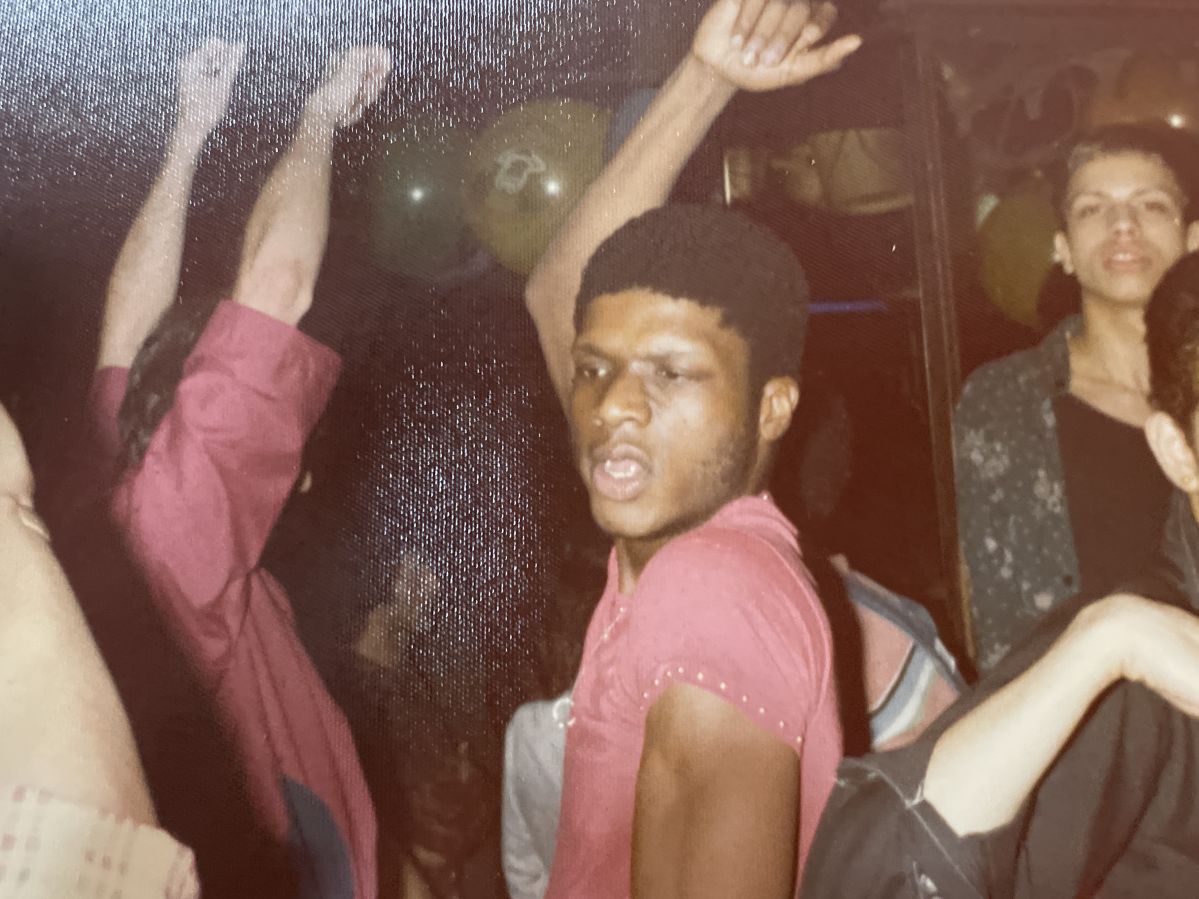
I think that’s brilliant advice for everybody isn’t it
It is, fear is lack of faith! Talk about two children who grow up totally differently, the problem child and the superstar. You know, Larry, who was so insecure with this talent, and Frankie so secure. They were two sides of a coin. Totally different. But what worked really well was that, they were friends. And Frankie brought Larry a record, Larry, we give it a fair listen. So together, house music was built at The Warehouse and The Paradise Garage. And that’s how House got its name. You know, The Warehouse? Frankie used to hand out tapes, and eventually they started The Warehouse it’s from the Warehouse, it’s house music.
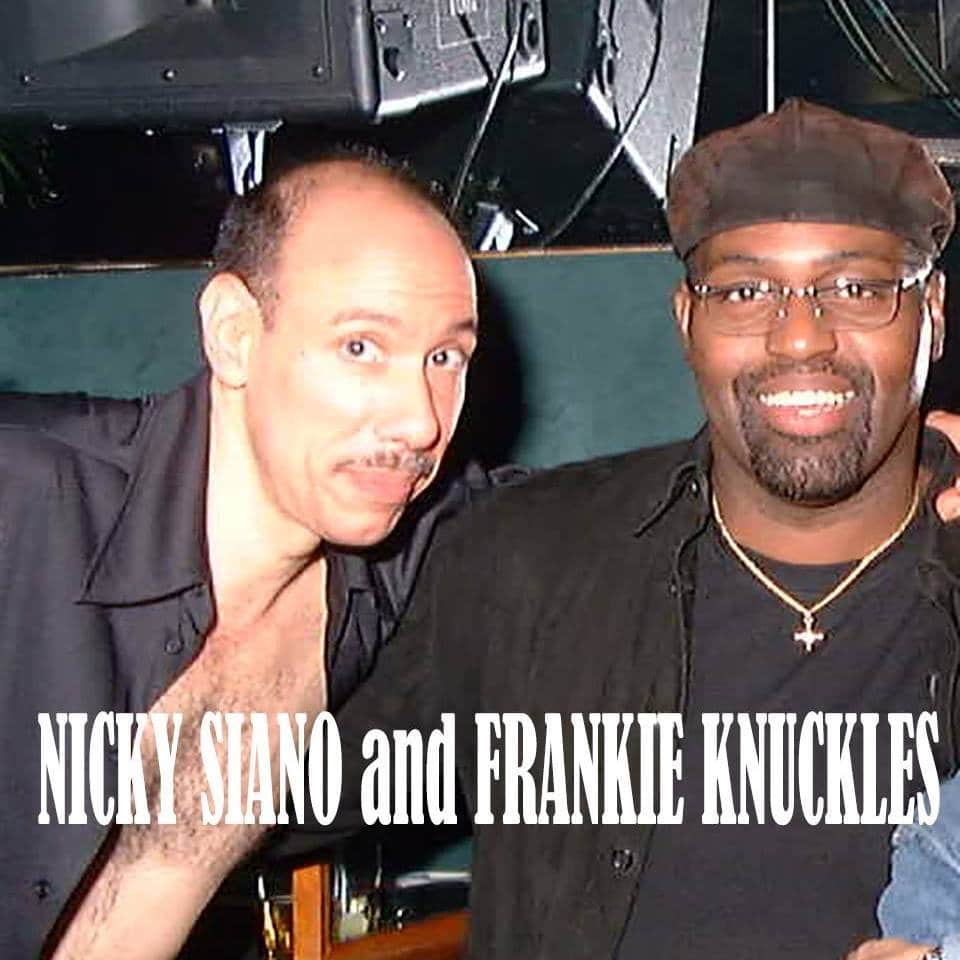
The Gallery album
In 2004 you came back onto the scene with a bang with the album Nicky Siano’s The legendary The Gallery (The Original New York disco 1973 to 1977) on the brilliant UK label soul jazz records
The iconic UK label!
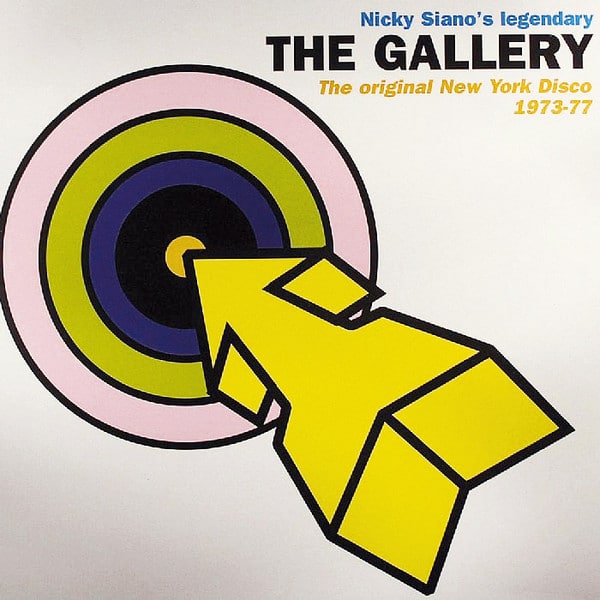
How did that album come about? And what are the chances of a Nicky Siano’s The Legendary The Gallery Volume 2 at some point in the future?
Absolutely. That is a big possibility. I don’t know if you’ve heard but I had signed a deal to make a movie about my life, and they are already in production. It will be out probably next year, if people could go to www.loveisthemessagefilm.com and support us by just putting in your email. We need support right now. There’s the gap in the budget, and the gap is, right now, what you’re talking about ‘The Soundtrack’. 12 years ago, I recreated the songs and I don’t want to do that. I want to use the original songs. And it’s gonna be expensive and we need to close that gap. So check out greenlit.com/LITM and if people could support us, I would appreciate it. You can also check out the trailer for the movie.
Hallelujah Disco
So you are behind the show Hallelujah Disco, from Stonewall to Studio 54. What can you tell us about the show? And are you planning on touring it again?
It follows my life from the time I ended up at the Stonewall riots, because I was going down the village to meet guys with my best friend Dennis and we came up under the Waverley theater. I’ll never forget it. And there was this sea of people and you couldn’t see over their heads and I turned to one of the guys who was a friendly face. And I said to the guy, what are they protesting? I thought it was the Vietnam War because that was regularly being protested. “We’re not gonna take it anymore. I want to dance with my lover on the dance floor. We’re not gonna take it anymore, gay rights”. It was the Stonewall Riots which ignited the flame of freedom for people who were gay all over the world. So I end up there. And it was the week Judy Garland had died, I remembered that. But I didn’t realize that that law being changed through those riots would enable me to open my club two years later. It is so Providence, Providence, Providence, it’s just like this was all meant to be
So how did the show come around? Does it follow your life from that point up until the studio 54?
Yeah, a friend of mine, who’s a great editor helped me put together montages of pictures and footage and all this stuff that I own. And I talk about what’s going on. And then an eight piece Gospel Choir comes out and does like Love Sensation and We lift our hands in Sanctuary. All God’s children, got soul by Dorothy Morrison. She did a song called Rain but this All God’s children got soul. Melba Moore sang it at Central Park. Oh my god, it tore the un-existing roof off the place. because it’s outside. So yeah, I would love to do it some more but I’m deep in the film right now, one thing at a time. I think there’s a lot of things I want to tie up this year, because COVID really knocked everyone down to the very beginning. We did it at Albert Hall in Manchester, and people still come up and say “I saw that show, when are you gonna do it again?” It was really good. You can go and see a really good trailer for Hallelujah Disco on YouTube. It has all those elements of Melba Moore and the gospel card that I used in England. It’s really good. Just search for Hallelujah Disco Nicky Siano. That’s it!
The club scene has obviously changed hugely since the 70s. What do you miss most about those times? And what, if anything, do you prefer about DJing in the 2020s?
Well, the 2020s, I get to interact with the people and my audience a lot more because of social media. People sometimes ask me questions about what I played. and “you played this after this, and the change was fabulous, but what was the song you went into?” I’m able to give them answers quickly and on the fly. What do I miss about back then? Friendship! We were going out into a club that was always filled with a few of our friends. Always. And you knew that no matter where you went, you would see 10 people you knew, especially before 75, especially that. So I miss that so much, because it added to the experience. What’s dancing about? It’s about joy and love and the expression of love. Who would you rather be with to do that? A close friend, a lover, anything like that would be perfect.
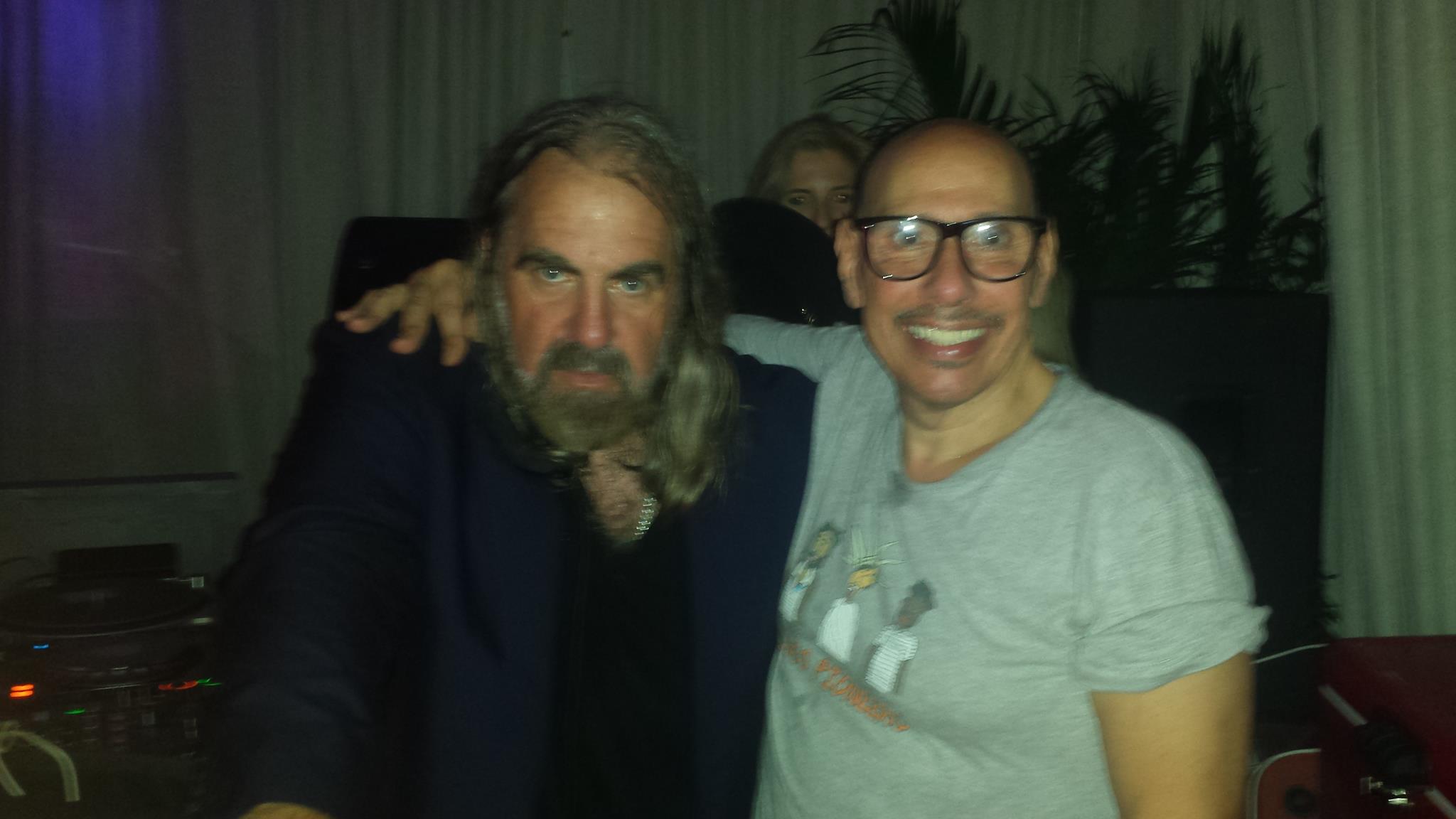
Scottish House and Disco Festival
One of your upcoming gigs? Is that the Scottish Disco and House festival in Glasgow on April the 16th? What are your tips for the festival? And what can we expect from your set, when you hit the decks that day?
I cannot give you an answer to what to expect. Expect it to be fun, expect it to be good. Because I don’t know what I’m gonna play. You know, there’s this is old saying, ‘You make plans and God laughs’. It’s all about in the moment, what I am inspired to play, I often would go into a room saying, I’m going to play this first. And I get there and “no, no, no, no, no”, “you’re playing this”. And I just knew it in the core of my soul. So I don’t know what I’m gonna play. But I can assure you, I’m going to do my best to help you have a good time.
What else can we expect from Nicky Siano in 2022,
A movie, a book, a TV series, whatever the hell they throw at me I’m taking right now. Because it needs to be told, I’m the last one here representing these DJs who was alive back then. I’m not saying I’m the last one, there are other people around but I was in the core, and a major player in the core of making this happen. There’s a couple people around who may have played records back then, but they didn’t own a club and it wasn’t in New York Magazine three times and the centerfold of the Sunday Daily News, and every other magazine that came out back then. So yeah, I’m the last one. And I need to tell this story in any way I can. Because it’s a story of friendship. It’s the story of people against all odds, making something that they wanted, so badly happen.
Thank you very much Nicky,
Goodbye, John, Goodbye
For more info please check
Nicky Siano Facebook: https://www.facebook.com/nickysianodj
Nicky Siano Instagram: https://www.instagram.com/djnick54/
Nicky Siano Twitter: https://twitter.com/NickySiano
Love Is the Message Film: http://www.loveisthemessagefilm.com/
Love this? Check out more on the Scottish House and Disco Festival HERE
